Chairman, Aditya Birla Group
The Budget continues in the direction set by the past few Budgets, with its orientation towards sustaining GDP growth at near double-digit levels, containing inflation and narrowing the fiscal gap.
Superimposed on these multiple objectives is the overriding need to promote bring about greater economic and social justice. The Budget has a slew of positives. The fiscal stimulus package remains in place with the excise duty at 10 per cent.Sops have been provided for key sectors such as housing and fertilisers. Equipment for large power projects has been exempted from excise duty. Overall, the Budget is consistent with the vision of transforming India into a major global economic player with equitable growth.
. . .
'Budget to maintain growth momentum in the economy'
Image: Sunil Mittal.Chairman, Bharti Group
Budget 2011-12 is clearly high on intent to maintain the growth momentum in the economy. From the point of view of industry, though the MAT has gone up marginally, reduction in surcharge on corporate tax is a good step.
The FM had little choice but to leave both direct and indirect tax rates untouched to maintain revenue growth to meet his fiscal deficit target.The rural broadband initiative to connect village panchayats is going to be an important enabler in the nation's governance.
The proposal to introduce direct transfer of cash subsidy will help plug the massive leakages that the PDS system suffers from. Mobile phones can ensure secure, reliable and affordable cash transfer of subsidies directly into the hands of the targeted people.. . .
'Budget to build on India's strengths'
Image: Chanda Kochar.MD & CEO, ICICI Bank
It's a growth-oriented Budget that seeks to build on India's strengths. The Budget recognises the long term growth drivers for the economy and seeks to strengthen them further.
Measures in this regard include continued focus on education and skill building to realise our demographic dividend and increased infrastructure investments through measures such as increasing the FII investment limit in corporate bonds, lowering of withholding tax for infrastructure debt funds, mechanisms to strengthen PPP and addressing environment related issues.Overall, the Budget focuses on areas requiring significant investments, while seeking to take forward the process of fiscal consolidation.
. . .
'Inflation was the core issue for common people'
Image: Kris Gopalakrishnan.MD, Infosys
There were worries about continuation of reforms and the Budget addressed that by giving a clear time frame for introduction of big ticket reforms like the New Companies Bill, Direct Tax Code and GST.
There were worries about the high current account deficit and he addressed to that to some extent by liberalising further the FDI policy by allowing registered FIIs to invest in mutual funds while at the same time increasing the limits for investments by FIIs in unlisted corporate bonds by $ 20 bn.The inflation was the core issue for common people and he addressed that by increasing the tax exempt slabs for individuals. The biggest surprise for the markets was the lower fiscal deficit and government borrowing next year.
. . .
'Market doubts fiscal deficit projections'
Image: Rakesh Jhunjhunwala.Stock investor
The good thing about the Budget is the fiscal prudence shown by the Finance Minister. While his intention to keep the government's net borrowing at Rs 3.43 lakh crore and fiscal deficit at 4.6 per cent in FY12 sends out the right signals, the market is seriously sceptical.
The market doubts these fiscal deficit projections and the ability of the government to meet targets, as fiscal discipline depends on a lot of things going forward.On the reforms side, no bold decision has been taken, some of which were much needed. On the positive side, the corporate sector was expecting a lot of taxes, which would have further impacted profitability. This has clearly not happened, so it is good for corporate India.
. . .
'A serious blow for the apparel industry'
Image: Kishore Biyani.Chairman, Future Group
The Budget has ensured that we are now ready to deal with the problems of efficiencies in production, distribution and processing of agricultural produce.
The FM has spoken about reforming the APMC act, fuelling the development of warehouse and cold storages etc. But from the consumer point of view, the Budget has nothing much to offer. The relief of Rs 20,000 in direct tax in no way would affect his consumption or spending power.One major segment of urban poor which accounts for 20 per cent of India has been neglected. The Budget is a serious blow for the apparel industry. Converting optional levy on branded garments into mandatory levy at 0 per cent comes after a 50 per cent in its input costs.
'Budget to alleviate concerns on current account deficit'
Image: Kaku Nakhate (Inset).President & Country Head, BankAm
On the balance of payment side, the minister has opened up two streams; one which is foreign investment in mutual funds with proper KYC and the $20-billion FII investment in corporate bonds.
This, in turn, should help alleviate concerns on India's current account deficit funding risks, especially seen in conjunction with the $7.2-billion inflow due to BP's investment in Reliance gas blocks.From a Mutual Fund perspective it is another avenue to raise and access funds which was earlier possible only via the offshore route. Just as importantly, the increase in the FII limit for corporate bonds along with relaxation in withholding tax for infrastructure bonds will go a long way in developing a strong domestic corporate debt market
. . .
'It is a balanced and good budget'
Image: Venu Srinivasan (Inset).CMD, TVS Motors
The government is moving towards fiscal consolidation and is embarking on a discipline to bring down deficits slowly. Also, there is focus on green initiatives and creation of storage facilities.
Another key aspect has been the announcement to increase share of the manufacturing sector in the GDP. We assume this would imply a wide range of reforms in factory processes, in labour acts.Only services would not be able to sustain the momentum in the economy, manufacturing would have to play an increasingly important role over time. Industrial competitiveness is important for creating the 100 million jobs, the government has in mind, over the next five years.
The only way to counter inflation is to resolve supply side constraints. On the whole, it is a balanced and good budget.. . .
'Finance Minister has done a brilliant job'
Image: Y C Deveshwar.Chairman, ITC
The Finance Minister has done a brilliant job of balancing the challenges confronting the economy and the opportunities that can ignite faster growth and progress of the country.
He has sought to consolidate the fiscal deficit through growth stimulated by moderation in taxes thereby encouraging savings and investment. The measures proposed in the Budget to expand the tax base would also provide a more robust source of future revenue accretion and competitiveness of the Indian economy.In addition, the Finance Minister has provided a strong impetus to inclusive growth by significantly investing in the long term drivers of the economy such as education, skill development, infrastructure and development of the rural economy.
. . .
'The Budget is growth oriented'
Image: A M Naik.Chairman, L&T
The Budget came at a critical juncture amidst high inflation, tight liquidity, elevated fiscal and current account deficits and issues on governance. Additionally the external environment has become more volatile.
In view of all this, the Budget appears balanced. There were no major negative surprises. This is the last year of the 11th five-year plan, and there has been focus on transparency and continuity. Increase in revenues is expected from good economic growth at 9 per cent and broadening the list rather than increasing the rates.Overall, the Budget is growth oriented with emphasis on rural development and inclusiveness. The highlight of the Budget was the fiscal deficit/GDP ratio of 4.6 per cent for FY12.
. . .
'Budget misses out on reforms'
Image: Xavier Labour Relations Institute.The view from B-schools
Shantanu Jindal
General Management Program 2011
Xavier Labour Relations Institute (Jamshedpur)
More education spend welcome
The Budget has significantly increased spending on education and introduced a number of schemes to increase employment and employability.
A number of subsidies for SC/ST students, funds for Maoist-affected areas and banking facilities for habitations with population less than 200 are measures for uniform wealth distribution. Infrastructure building in all forms has been given acute attention. Infusion of Rs 30,000 crore for physical infrastructure and measures for IT infrastructure provide for not only increased economic activity but also a mammoth leap towards better, quicker and modern governance.The government is focusing on the manufacturing sector and has introduced surgical measures to increase its share in GDP from 16 per cent to 25 per cent over the next 10 years. This is imperative for self-reliance on domestic production and development of Indian industry.
India Inc will like the allowance of FDI in Indian mutual funds but will be disappointed that the Budget has remained silent on the furtherance of the reforms process for increased flow of FII & FDI in a number of sectors.Overall, the Budget attempts to address inflation and food security, stresses on inclusive growth, changes no significant economic policy but misses out on reforms.
. . .
'Education outlay remains a mixed bag'
Image: Indian School of Business.No push to higher education
Sidharth Malhotra
Indian School of Business, Hyderabad
While Pranabda's budget is not a spectacularly reformist one, we should note that it does nothing to topple the economic apple cart. It is both balanced and growth oriented, although it falls short on some key dimensions.
The positives were clearly the much-needed increase in public spending in the infrastructure sector and the FII limit to $25 billion. The fiscal deficit target for FY2011-12 has been ambitiously pegged down at 4.6 per cent, but only time will tell whether we are able to meet it. The FM has also given a boost to the industry by maintaining peak excise duty and reducing customs duty in selective industries.The education outlay remains a mixed bag. The FM has increased the outlay 24 per cent to Rs 52,057 crore and more stress is being laid on vocational education, but there is no impetus specifically for higher education. For instance, education loans should have been brought under priority sector lending, making it easier for young talent to access better education.
Inflation is a major issue plaguing the economy. It is surprising to see that the Budget does not have a clear focus on curbing inflation in the short term. Overall, it is a Budget that maintains the status quo, but one that should continue to fuel India's socio-economic growth juggernaut.
. . .
'We have a Budget without many surprises'
Image: Bombay Stock Exchange.Chairman, India Infoline Group
For the last couple of months, the market and governance have both been reeling under a negative sentiment. Although most of the gains were reversed on Budget day, I still feel this Budget will go a long way in turning the India sentiment positive.
While the stock market performance will depend a lot on FII flows, which in turn will also depend on global developments, the finance minister has taken several positive steps to promote a higher flow of capital by way of equity as well as debt. The lower fiscal deficit target should ensure that private investment is not crowded out and the growth momentum is sustained. I am personally enthused by the minister's boldness in keeping indirect taxes at the same level.Raamdeo Agrawal
Joint MD, Motilal Oswal Financial Services
After a long time, we have a Budget without many surprises. This Budget has focused on pending legislative reforms. Direct and indirect tax proposals have been very few and largely revenue neutral.
Finance Minister Pranab Mukherjee has set his sights on implementing the direct tax code and GST from April 1, 2012. If implemented, these reforms may go down as among the biggest since the de-licensing of industries. Markets will eventually take a view on the quality of earnings and the discount rate. With foreign nationals now allowed to invest directly in Indian mutual funds, the FM is signalling that the foreign capitalist is welcome. All in all, 2011-12 should be a good year for equities.
Ashok Wadhwa
Group CEO, Ambit Holdings
By setting a fiscal deficit target of 4.6 per cent for FY12, the FM has taken upon himself the task of delivering a divestment target of Rs 40,000 crore while controlling expenses. This would include managing subsidies, which could jump due to the political instability in oil producing countries.
Allowing foreign nationals to invest in Indian mutual fund schemes might not have a major impact on the monies already invested by FIIs, as re-routing will have tax implications. However, this could well act as a new calling card for mutual funds for selling India as an investment destination.. . .
'FM has continued with the growth stimulus'
Image: Stock market traders.Chairman & CEO, Edelweiss Group
The Finance Minister has forsaken the big bang approach in favour of a more incremental approach towards economic policy making. There were huge expectations in areas like fiscal consolidation, tax reforms, financial sector reforms, infrastructure development and action on corruption.
On almost all these fronts, he has decided to take a cautious, but perhaps more nuanced, approach. The fiscal deficit as well as net market borrowing numbers are surprisingly low. The FM hopes to peg the deficit in FY12 at 4.6 per cent of GDP and has budgeted for net borrowings of about Rs 340,000 crore. At first glance, both estimates seem overly optimistic. But read between the lines, and perhaps what he is signalling is that at some point during the year, maybe post the state elections, he would look at doing away with administered pricing for diesel and kerosene. That would definitely reduce the subsidy burden.Vallabh Bhanshali
Chairman, ENAM Securities
By not rolling back excise and customs duties, the FM has continued with the growth stimulus. This is the key to growth that will determine the outcome of spending on critical social schemes as well as infrastructure.
The FM has surprised positively by raising the FII limit in corporate bonds to $40 billion and permitting foreigners to invest in Indian mutual funds. This can bring in a lot of money, depressing long-term interest rates over a period of time. While the Budget's impact on the market is over, unless something comes out after reading the fine print, it has now become a long-term buyers' market. This is not a market for those into fishing at the bottom. Improvement in the primary market could also follow. However, all the stakeholders, including regulators, will have to work hard to talk up the investment climate.. . .
It's a non-populist Budget'
Image: Sanjay Nayar.CEO & Country-Head, KKR India
It's a pragmatic Budget with a bias to steady and consolidate last year's gains. Overall, it's non-populist, unless we see surprises during the year, and non-reformist, with no policy announcements on insurance, banking or retail.
The importance of creating capacity in the key thrust areas has got due recognition. While there are no specific policy announcements, the emphasis on expanding the options for infrastructure funding, agriculture supply chain focus, larger allocation to education and, finally, a recognition of the importance of increasing the manufacturing share in GDP in the next 10 years are all terrific. But, execution will be key.An increase of 17 per cent in social sector spending, the continuing spend through NREGA and a sincere attempt to integrate the rural economy with the mainstream are going to remain big drivers of the growth story.
Some attempts to revitalise the infrastructure financing space, corporate bond markets and a Rs 20,000 crore recapitalisation of PSU banks are all welcome but an ecosystem that supports asset creation would be the key. The opening of external flows to fund infrastructure should be handled very carefully, given the money variables that can easily get out of hand. The last thing we would need is an external account problem, with the current account already running above average levels.The headline-grabbing number was the fiscal deficit target at 4.6 per cent, which was much better than expectations. But, my concern is the composition and stickiness of expenditure rather than the number per se.
Still heavy on subisidies, oil deficit and interest costs, it remains low on capacity building in the real economy. My personal view is that this Budget, like the last two, continues to consolidate the 8-9 per cent growth paradigm, but does little to lay out a break-out strategy.. . .
'The Budget is growth oriented'
Image: Bhargav Dasgupta (inset).MD & CEO, ICICI Lombard General Insurance
Positives for auto insurance
The Budget is growth oriented and aims to ride the positive momentum in the Indian economy.
It continues to focus on the areas of financial inclusion, rural growth, education and infrastructure investment. While inflation continues to remain a concern and increased government spending envisaged in the Budget may continue to put demand-led pressure on prices, the thrust on addressing supply-side bottlenecks is a positive. Last year, service tax was introduced on payments by insurance companies to hospitals, nursing homes or multi-specialty clinics under the health insurance scheme for any health check-up or treatment.This Budget has enhanced the scope to cover all payments made to the above entities, including maternity homes, sanatoriums, diagnostic centres, etc. Earlier, only cashless payments were under the ambit of service tax; by this change, even reimbursements have been brought under the tax ambit.
Effectively, the cost of health care would increase. The Budget has kept the excise duty on automobiles intact, which is a positive for motor insurance as we expect to see continued growth in the automotive sector.



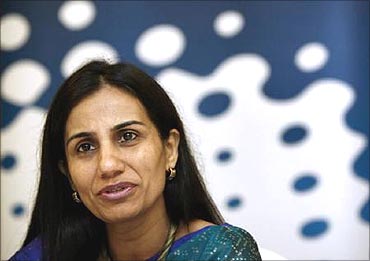
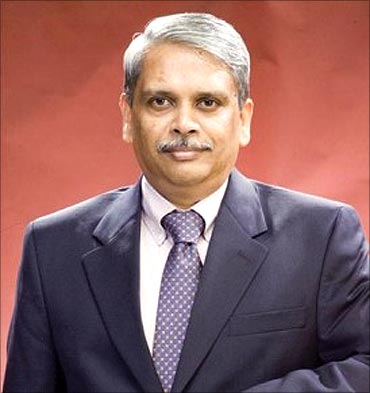
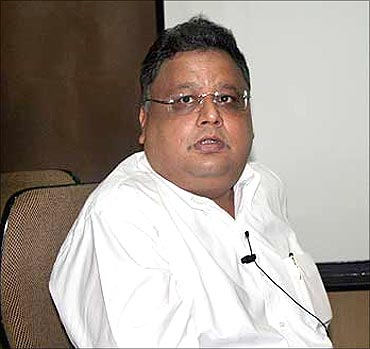


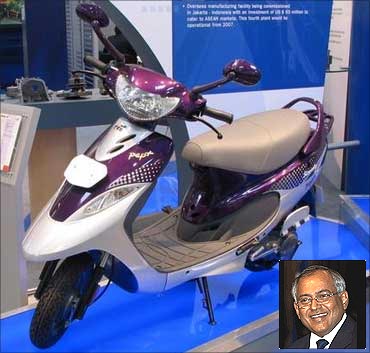
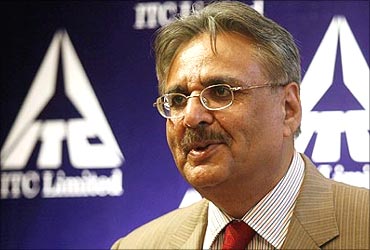


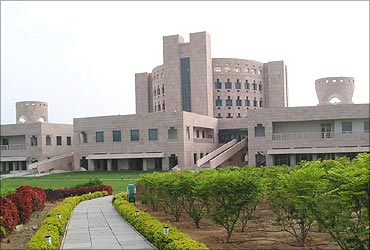
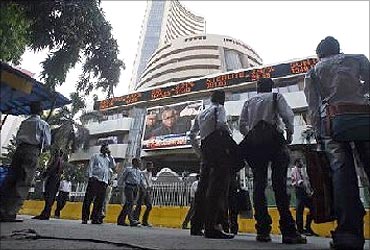




article